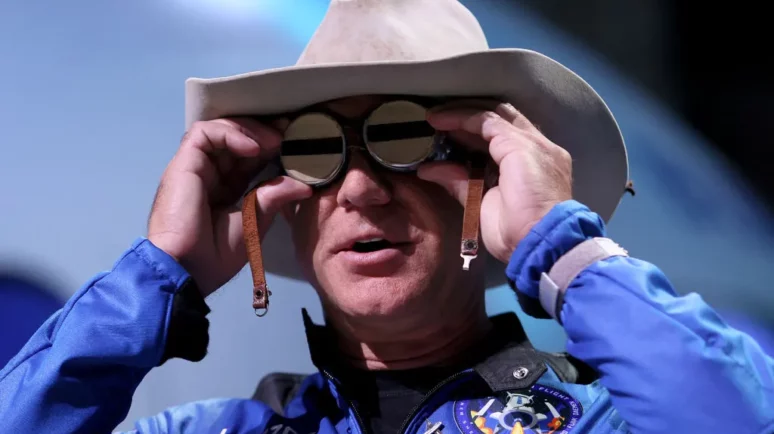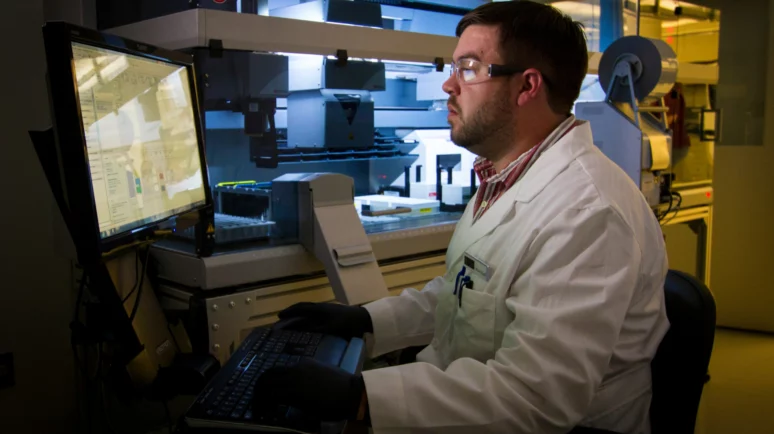NASA and Intuitive Machines Make Lunar History: New Moon Landing and What Artemis Program Is

The US ‘Odysseus’ spacecraft successfully touched down on the surface of the moon. | Credit:Houston Chronicle/Hearst Newspapers via Getty Images /
Key Takeaways
- A US spacecraft has successfully reached the south pole of the moon.
- Mars is the ultimate goal of NASA’s space exploration efforts, with plans to send astronauts there by the 2030s.
- The Moon serves as a crucial testing ground for technologies and strategies necessary for a successful Mars mission.
The US ‘Odysseus’ spacecraft successfully touched down on the surface of the Moon, marking a historic moment in space exploration.
The unmanned lunar lander, a project by Intuitive Machines, achieved its soft landing at 5:23 p.m. CST on Thursday, February 22nd.
The US Returns to the Moon
NASA and Intuitive Machines have confirmed the successful landing of spacecraft Odysseus on the south side of the moon. This is the first time a US spacecraft has touched down on the moon since the last Apollo mission in 1972.
“for the first time in more than a half century, the US has returned to the moon” said Bill Nelson, the NASA administrator.
In 2019, Vice President Mike Pence set a deadline to land humans at the lunar south pole by 2024, a goal now officially reached by the American space agency.
What is NASA’s Artemis program?
NASA’s Artemis program is a comprehensive initiative aimed at returning humans to the Moon and establishing a sustainable presence there by the 2020s. Artemis aims to build upon the legacy of the Apollo missions while also incorporating new technologies and approaches to enable long-term lunar exploration.
Unlike the Apollo missions, which were relatively short-term ventures, Artemis aims to establish a sustainable presence on the Moon. This includes the development of infrastructure, such as habitats, rovers, and power systems, to support long-duration missions.
NASA administrator Jim Bridenstine outlined NASA’s plan to build a presence on the moon by 2024:
“Under the Artemis program, humanity will explore regions of the Moon never visited before, uniting people around the unknown, the never seen, and the once impossible. We will return to the Moon robotically beginning next year, send astronauts to the surface within four years, and build a longterm presence on the Moon by the end of the decade.”
Founded in 2013 by Stephen Altemus, Kam Ghaffarian, and Tim Crain, Intuitive Machines is one of NASA’s contractors as part of the agency’s Commercial Lunar Payload Delivery Services (CLPS) initiative.
According to its website, NASA selected Intuitive Machines LPDS program for three lunar missions; to send the first American spacecraft to the surface of the Moon since the Apollo Program and send the first spacecraft ever to reach the lunar south pole.
The achievement by NASA and Intuitive Machines completes the milestone goal outlined in the Artemis program.
Mars the Real Goal?
While the Artemis program’s primary focus is on returning humans to the Moon, its true ambition lies beyond, with Mars as the ultimate destination. According to three-time NASA astronaut Steven Swanson, who has amassed over 195 days in space across multiple missions, including to the International Space Station, Mars represents the ultimate goal of human space exploration.
“The real goal is Mars,” Swanson emphasized in an interview with All About Space magazine. “And we will use the moon as a testbed because Mars is a very difficult mission.”
A Mars mission poses unique challenges, including the need for astronauts to endure nearly three years in space, with no possibility of early return. The journey itself spans seven to eight months, followed by a 15-month wait on Mars for the planets to align favorably for the return trip.


